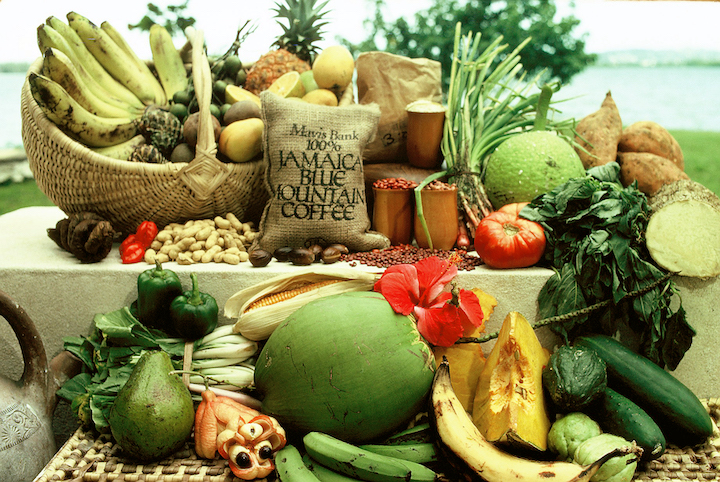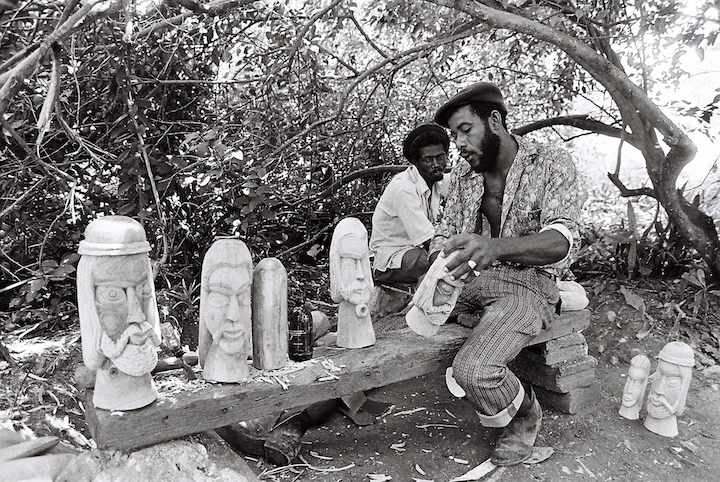Project
Research trip to Jamaica 1981

Photograph of Jamaican foods taken on the Research trip.

Rocky, a woodcarver, who we met on the trip. He later became the subject for my basic reading books.
Working closely with the HAS client group, who were almost all completely disaffected with the norms and values of the traditional English education system, convinced me that new and radically different materials and text books were needed if I was to be able to reach out and help these young men.
During the course of my work I had come into contact with Sidelines, the design and photography agency run by Brian Homer, Derek Bishton and John Reardon in Grove Lane, Handsworth. Derek and Brian had published a book about Rastafarianism written by John Plummer called Movement of Jah People, and had also worked with Clare Short and Affor, editing and designing a book about police-black relations called Talking Blues.
I visited their offices several times to talk about my ideas for publishing materials to help with my literacy work, and Derek and I became close friends. In January 1981, Derek spent a month living with a group of Rastafarians settled in a small town in Ethiopia called Shashemane, and returned with many photographs and interviews. He was keen to extend his research to Jamaica, where the Rasta movement had originated from, and we decided to make a joint visit in the summer of 1981.
I had several objectives. Obviously I was looking forward to going ‘home’ and showing off my beautiful island, but I also wanted to find out more about the Jamal project, an adult literacy scheme set up by the Manley government in the early 1970s that had produced a range of reading materials. I also wanted to know what issues faced returning residents (many of my older students were considering returning to Jamaica, as indeed was my own father); and I wanted to collect as much material as possible that I could use as teaching materials with my HAS clients.
The trip was completely self-financed, but I was able to obtain a grant of £500 for film stock so that Derek could take photographs. We travelled all over the island, photographing places of interest such as the Marcus Garvey memorial in St Anne’s Bay, the Tuff Gong studio in Kingston, famous musicians and other cultural figures, and returned with significant amounts of educational resources – which also included books, and interviews which I recorded using a small cassette recorder.
When we returned to England and assessed the material we had gathered – which also included photographs and interviews with a Jamaican wood-carver called Rocky who we had met – it quickly became clear that we had lots of resources that could be turned into educational materials that would hold a special appeal to most of my HAS clients. Thus the idea of a publishing project was born.